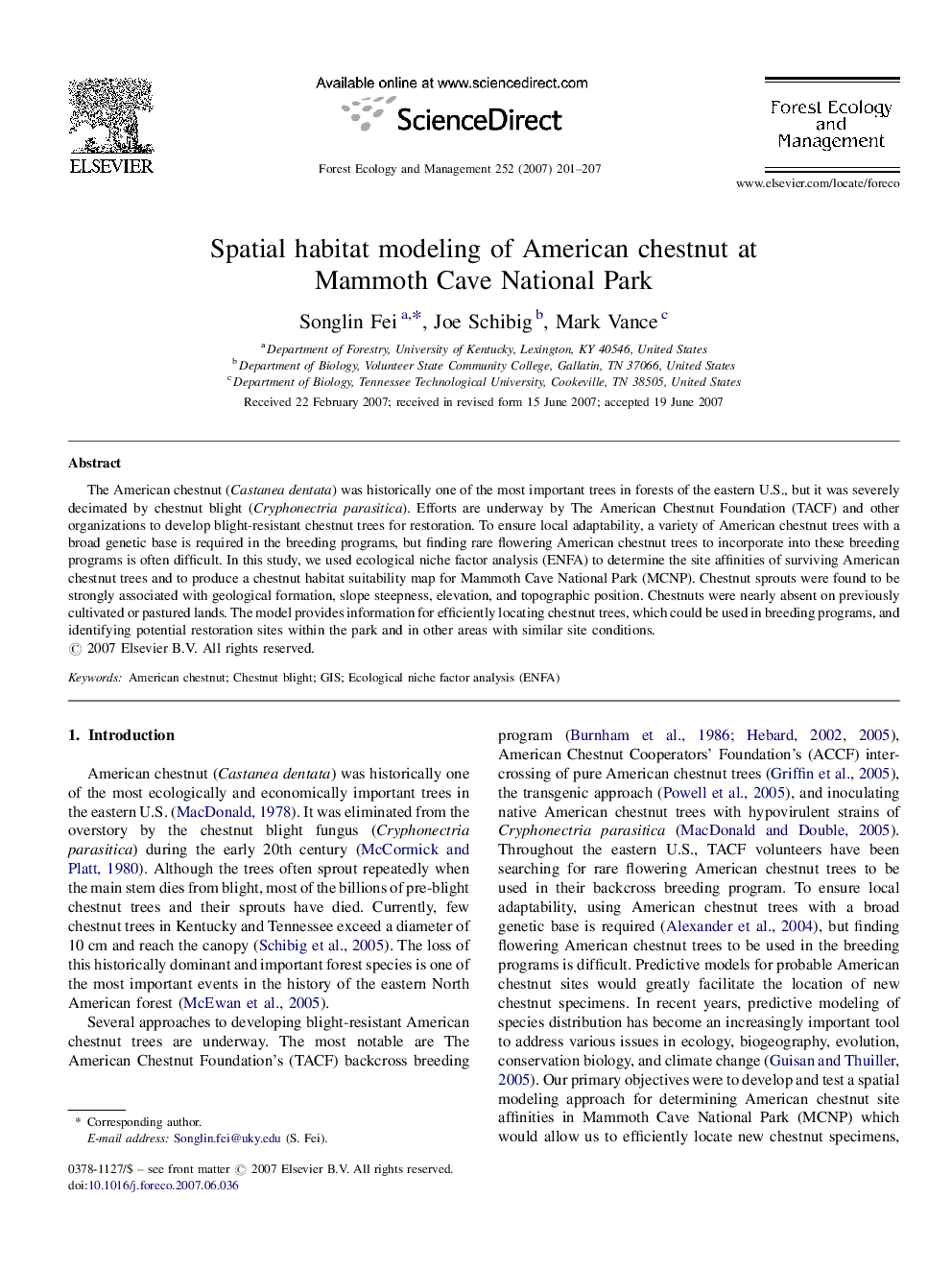| Article ID | Journal | Published Year | Pages | File Type |
|---|---|---|---|---|
| 90064 | Forest Ecology and Management | 2007 | 7 Pages |
The American chestnut (Castanea dentata) was historically one of the most important trees in forests of the eastern U.S., but it was severely decimated by chestnut blight (Cryphonectria parasitica). Efforts are underway by The American Chestnut Foundation (TACF) and other organizations to develop blight-resistant chestnut trees for restoration. To ensure local adaptability, a variety of American chestnut trees with a broad genetic base is required in the breeding programs, but finding rare flowering American chestnut trees to incorporate into these breeding programs is often difficult. In this study, we used ecological niche factor analysis (ENFA) to determine the site affinities of surviving American chestnut trees and to produce a chestnut habitat suitability map for Mammoth Cave National Park (MCNP). Chestnut sprouts were found to be strongly associated with geological formation, slope steepness, elevation, and topographic position. Chestnuts were nearly absent on previously cultivated or pastured lands. The model provides information for efficiently locating chestnut trees, which could be used in breeding programs, and identifying potential restoration sites within the park and in other areas with similar site conditions.
